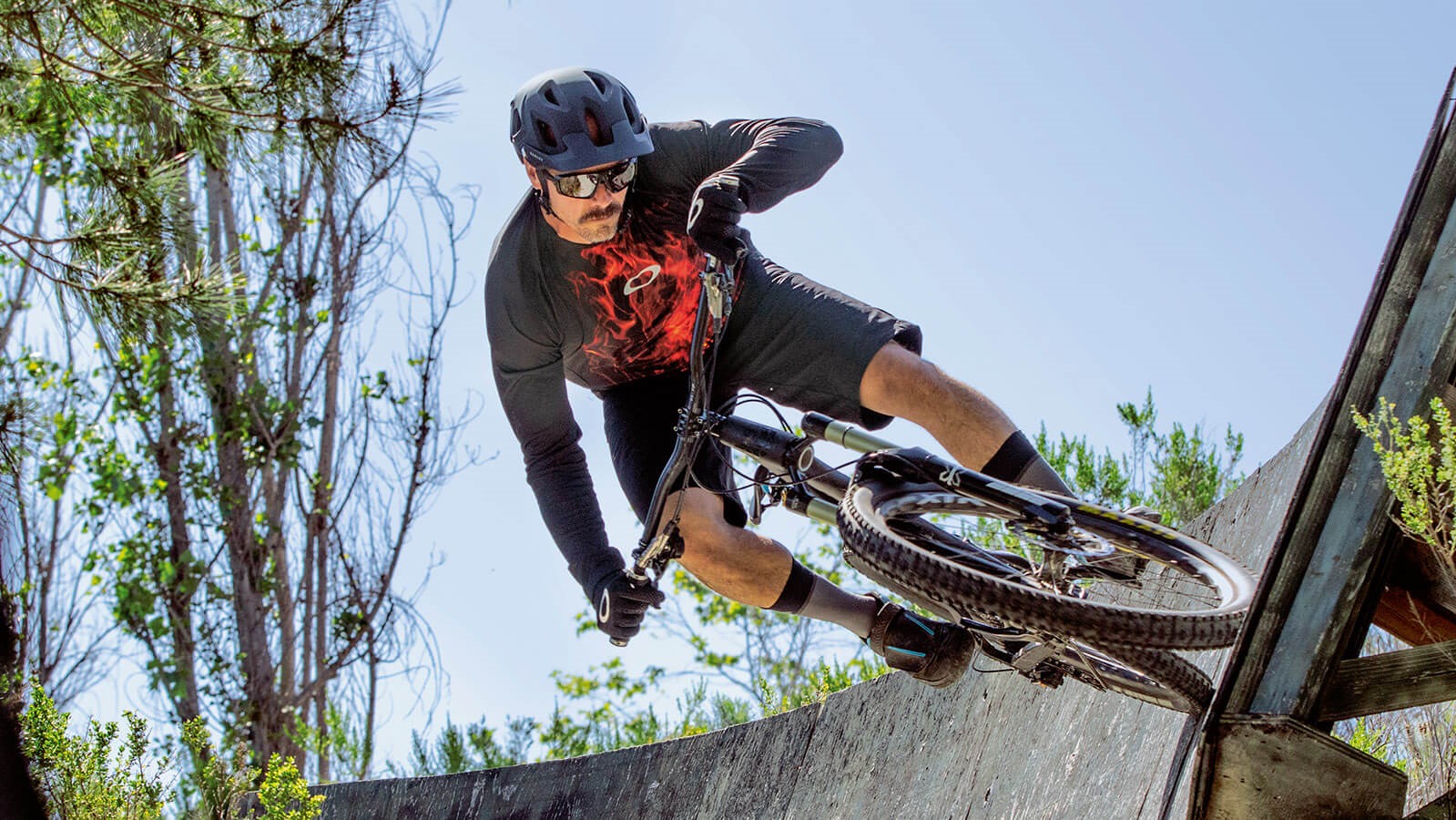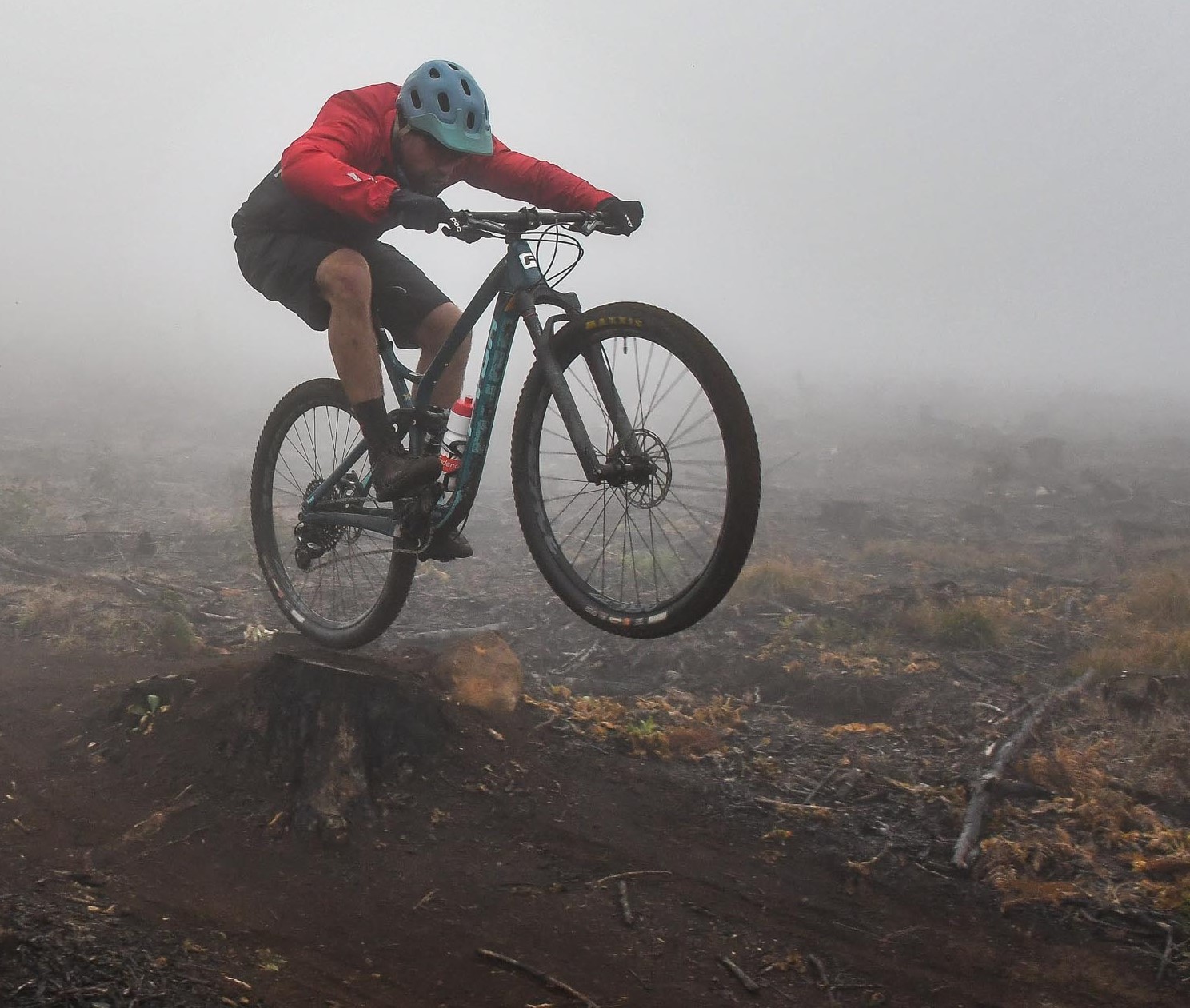Why isn’t mountain biking eye protection mandatory?
Why mountain biking without eyewear is like riding without a helmet

Mountain biking is healthy, thrilling, mindful, rewarding and dangerous. There is no disputing the fact that riding a bicycle over technical terrain, or threading through a forest at speed, is not something that can routinely be indulged in without the risk of incident.
We are all aware that a mountain bike crash can have severe consequences - injury. And in extreme cases: the possibility of a lifelong disability or impairment. To mitigate against the issues of crashing, we wear protective gear – the most of obvious and crucial of which, is your helmet.
The brain is most at risk when crashing. In 2019, nobody would imagine riding down a trail, even a blue-graded singletrack, without their helmet in place. We replace helmets after crashing, knowing that they saved us but also served their purpose and are no longer as structurally sound.
Each rider diligently adjusts their straps and clips, in front of a mirror, after unboxing a new helmet. We fiddle to find that perfect fit – seeking cranium comfort for all those hours we’ll be riding with a helmet in place. But we also realise that correct helmet fit - and fastening - is crucial in allowing this most important component of protective gear to do what it was designed to, in the eventuality of a crash.
Helmets are so obviously important to the safety of riders and sustainability of all mountain biking that we never dispute the ‘no helmet, no ride’ rule at any trail network. It is an obligation we all adhere to.
Helmet logic for eyewear
At its most powerful, truth is self-evident, and helmets must be worn. But why not eye protection, too? It is incredible that we don’t value eye protection as the something worthy of mandatory regulation in mountain biking – as we do with helmets.
With road cycling one can understand a caveat of sorts: there are no overhanging branches on a tar road to whip you in the face. But riding trails, on a mountain bike, expose your eyes to a tremendous risk of damage.
Vision is vital – we shield our eyes from the sun when walking outside by wearing shaded glasses. In most sports, we’ll always turn our head from any threat, to protect our eyes. If you work in an environment that is not a technology office or service industry, chances are: protective eyewear is mandatory in many ways and strictly enforced.
And yet we continue to ride mountain bikes without enforced eyewear protection. This is not due to a lack of viable alternatives. The market for quality riding glasses is immense, with frames of function and fashion to fit any rider’s facial features or sense of style. But most importantly, riding glasses protect our eyes.
Many trails might be diligently maintained but in springtime there can be overgrowth. Branches can encroach. Even worse: they can break off and sit across the trail at an odd angle.
More dangers off-road than on it
Anybody who has ever sped through a flowing forest singletrack and navigated into a narrow section, framed by denser foliage, would have possibly had the nasty surprise of being struck in the face by an extended branch. The resulting experience varies between annoyance and potentially life-altering eye damage – if you aren’t wearing riding glasses.
The same logic applies when you are out riding in group. Descending in a singletrack train has a great sense of energy and camaraderie, but the reality is that following distances are not always adhered to.
You might get excited and close in on the back wheel of the rider ahead. Chances are, they are running a new tyre, with a very aggressive tread pattern. Some of the grippier contemporary mountain bike tyres have an ability to dig, lift and project trail debris at frightful intensity.
All you need is one tiny stone, shard of shale or clump of sedimented mud to be flung into your eye at speed from that rear tyre you are chasing. Or even an insect flying into your eye at speed. Either of these scenarios can cause painful eye damage.
The simplest way of avoiding having your vision damaged or breaking a collarbone/wrist as the result of a ‘foreign-object-in-eye’ reaction crash, is to simply wear a pair of riding glasses.
The sacrifice is negligible. Much like wearing a helmet. And the mitigation against terrible consequences are tremendous. Like wearing a helmet. Which is why it astounds me that we still don’t regulate or mandate eye protection on all trails.

Lance Branquinho is a Namibian-born journalist who graduated to mountain biking after injuries curtailed his trail running. He has a weakness for British steel hardtails, especially those which only run a single gear. As well as Bike Perfect, Lance has written for MBR.com, Off-Road.cc and Cycling News.
